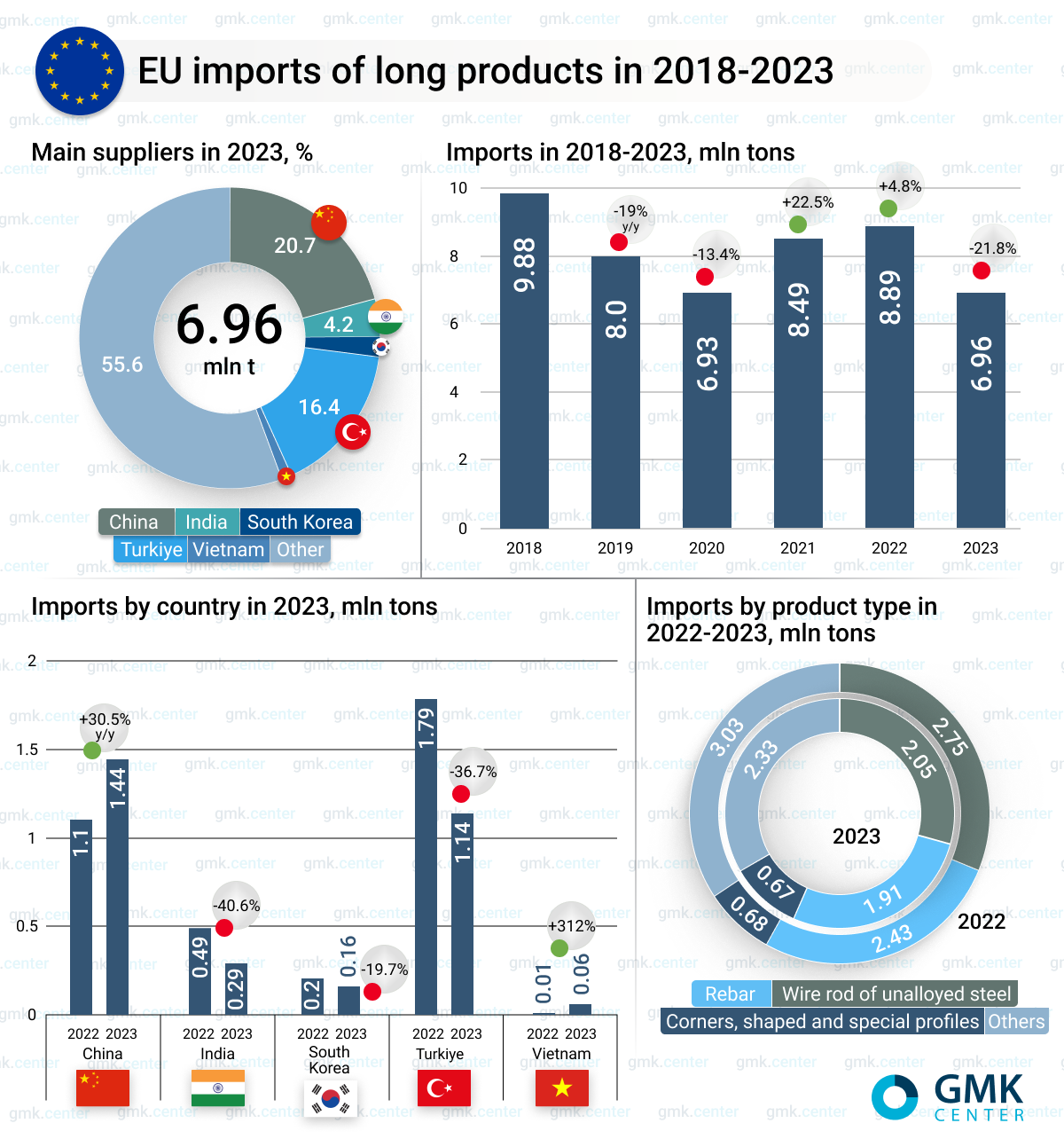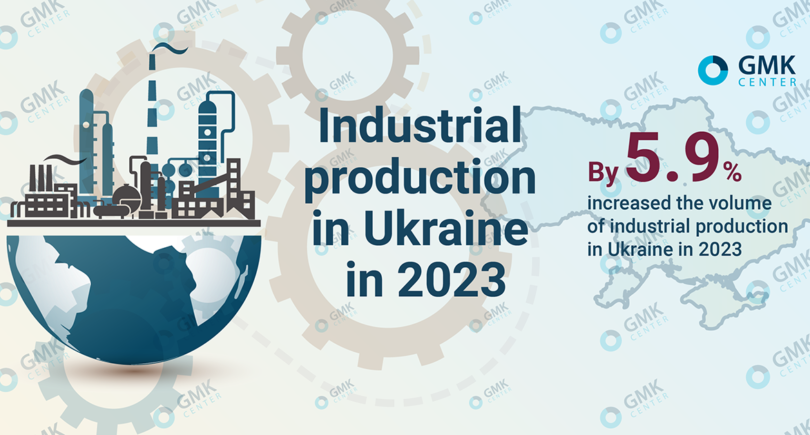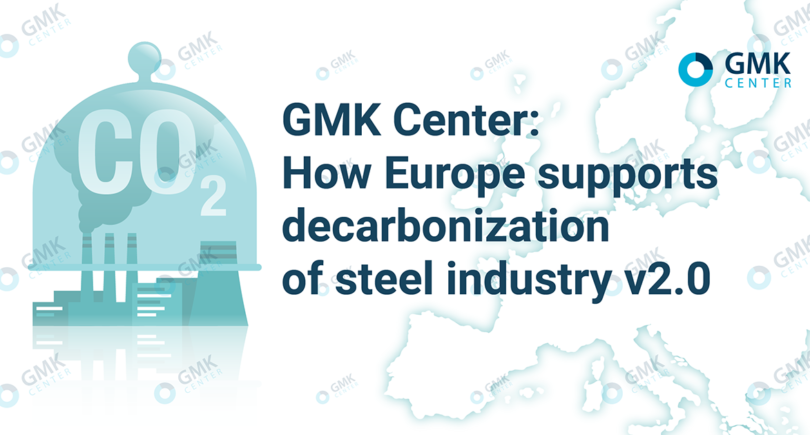
Infographics long products 740 06 March 2024
China and Turkiye were the main suppliers of long products to the EU last year
In 2023, the European Union reduced imports of long products by 21.8% compared to 2022, to 6.96 million tons. After two years of growth, import volumes fell to the level of 2020, the period of the COVID-19 pandemic. This is evidenced by GMK Center’s calculations based on Eurostat data.
The dynamics of long products imports over the past 6 years is as follows:
- 2018 – 9.87 million tons;
- 2019 – 8 million tons (-19% y/y);
- 2020 – 6.93 million tons (-13.4% y/y);
- 2021 – 8.49 million tons (+22.5% y/y);
- 2022 – 8.89 million tons (+4.8% y/y);
- 2023 – 6.96 million tons (-21.8% y/y).
The main suppliers of long products to the EU are China and Turkiye. In 2023, Chinese suppliers shipped 1.44 million tons of long products to the EU, up 30.5% compared to 2022, and Turkish suppliers shipped 1.36 million tons (-36.7% y/y). India exported 291.8 thousand tons to the EU (-40.6% y/y), Japan – 45.3 thousand tons (-24.5%), South Korea – 163.22 thousand tons (-19.7% y/y), Taiwan – 37.64 thousand tons (-12.5%). At the same time, Vietnam increased supplies by 4.1 times y/y, to 59.34 thsd tonnes.
«The construction industry in the EU is stagnating, which is reflected in consumption and imports of long products. The capacity of European producers is not fully utilized. In the context of the CBAM introduction, we expect imports of long products to decline to a minimum, as local producers will be able to replace most of them,» said Andriy Glushchenko, GMK Center analyst.
The largest imports over the year were non-alloy steel wire rod – 2.05 million tons (-25.4% y/y), rebar – 1.91 million tons (-21.4%), and angles of shapes and special profiles – 670 thousand tons (-1.5%).



